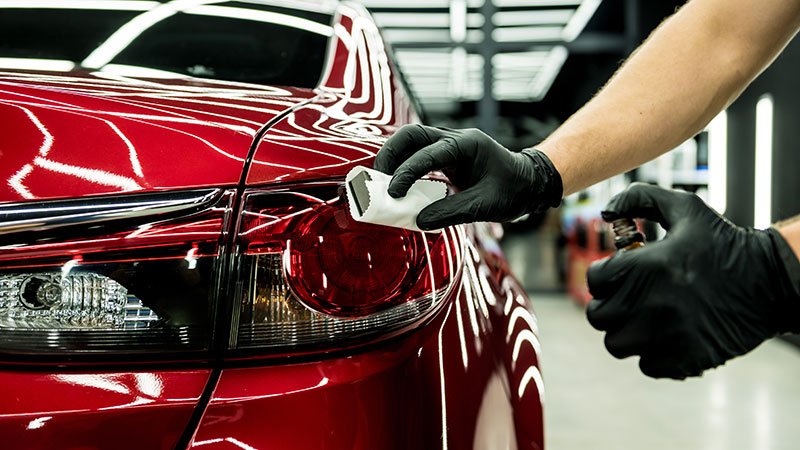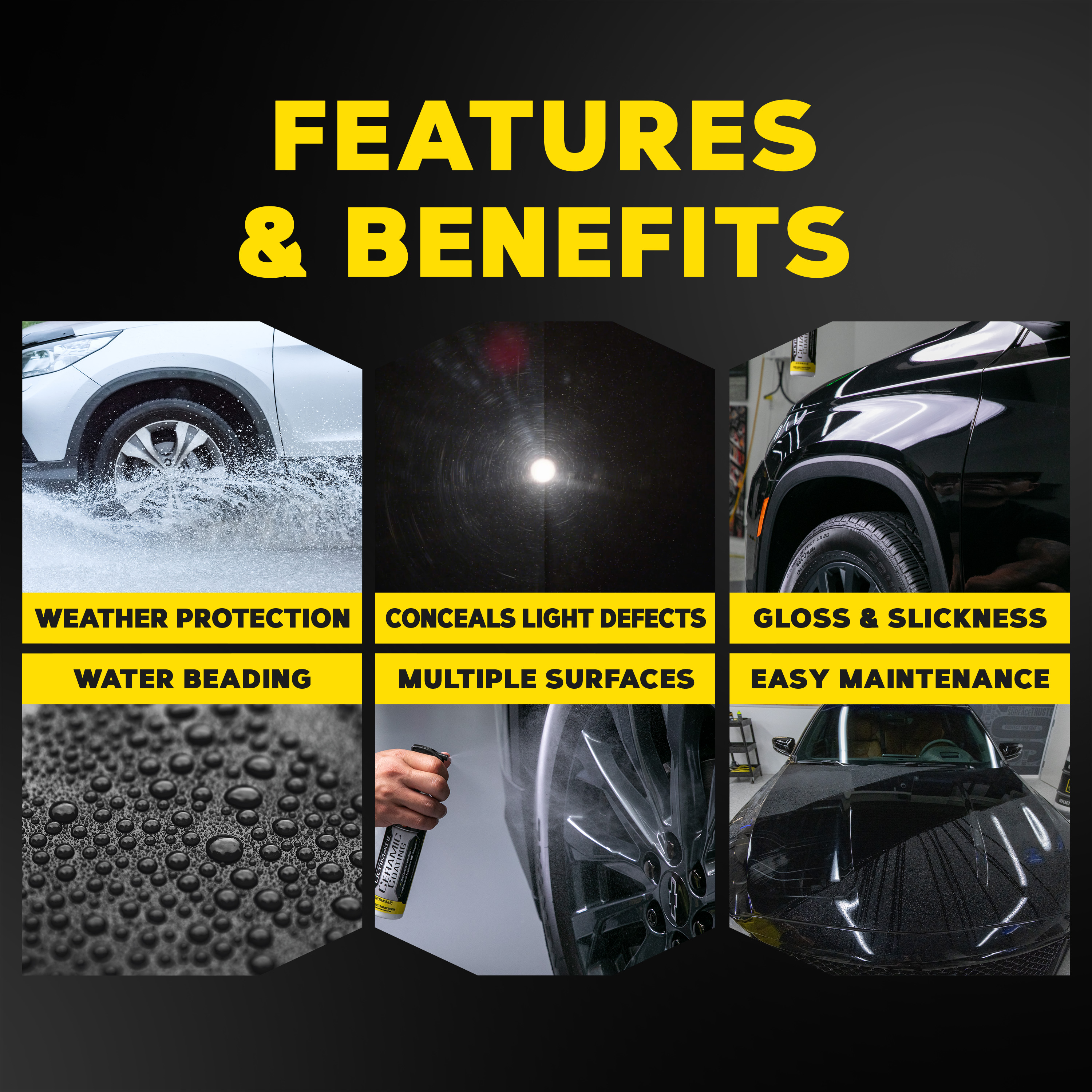Advanced Modern Technology Behind Ceramic Coating Philadelphia for Ultimate Defense
Advanced Modern Technology Behind Ceramic Coating Philadelphia for Ultimate Defense
Blog Article
Why Ceramic Finishing Is the Ultimate Remedy for a Flawless Finish
Ceramic finishing has actually arised as a leading service for those looking for a perfect coating for their automobiles, thanks to its remarkable durability and protective attributes. What factors really set ceramic layer apart?
What Is Ceramic Covering?

When used correctly, ceramic layer creates a hydrophobic surface area that wards off water and dirt, making it less complicated to clean up and maintain. Unlike typical waxes or sealers, which generally supply short-lived defense, ceramic coatings can last for several years, depending upon the item top quality and application method. The procedure of applying ceramic layer requires precise preparation, consisting of thorough cleaning and sometimes repaint improvement, to make certain ideal bonding and efficiency.
Ceramic finishings are not restricted to automotive surfaces; they can also be used on different materials, including glass, metal, and plastics, providing a functional remedy for improving security. Generally, ceramic coating represents a significant advancement in surface defense innovation, integrating both functional and visual advantages for a vast array of applications.
Advantages of Ceramic Finish
While lots of surface protection alternatives exist, the benefits of ceramic layer stand out because of its special properties and lasting performance. One of the key advantages is its extraordinary sturdiness. Ceramic Coating Philadelphia. Unlike typical wax or sealers that call for frequent reapplication, ceramic layers provide a resistant layer that can last for a number of years, substantially minimizing upkeep efforts
An additional noteworthy advantage is improved security versus ecological contaminants. Ceramic coverings produce a hydrophobic surface area that pushes back water, dust, and different contaminants, making it simpler to cleanse. This attribute not just protects the automobile's appearance yet additionally decreases the threat of deterioration and oxidation, especially in extreme climate condition.
Additionally, ceramic finishes use premium resistance to UV rays, stopping fading and destruction of paint over time. This UV protection is critical for preserving the visual value of surfaces and lorries exposed to route sunlight.
Furthermore, the glossy coating attained with ceramic layer enhances the total visual allure, providing surfaces a showroom-quality luster. On the whole, ceramic coatings stand for a substantial advancement in surface security technology, providing long-lasting advantages that satisfy both aesthetic and useful needs.
How It Works
Recognizing the scientific research behind ceramic layers reveals exactly how they offer such exceptional security and longevity. At its core, a ceramic finishing is a liquid polymer that chemically bonds with the car's manufacturing facility paint. This bonding produces a protective layer that is both hydrophobic and oleophobic, repelling water, dust, and oil. The key element of a lot of ceramic coatings is silicon dioxide (SiO2), which is originated from quartz. This substance adds to the covering's hardness and resistance to scrapes, UV rays, and environmental contaminants.
The application procedure involves several actions, consisting of surface prep work, which is essential to accomplishing optimum attachment. Once applied, the finishing undergoes a healing procedure, throughout which it hardens and develops a semi-permanent bond with the paint surface area. This bond is what distinguishes ceramic finishings from typical waxes and sealants, giving a longer-lasting safety barrier that can withstand for many years.
In addition, the density of the covering can improve its safety qualities, ensuring that it can hold up against harsh problems. Eventually, the science of ceramic coverings incorporates sophisticated products with innovative application strategies to provide an unrivaled degree of defense and visual enhancement for automobiles.
Contrast With Conventional Techniques
When contrasted to standard paint security methods such as sealants and why not try these out waxes,The benefits of ceramic finishings come to be particularly obvious. While waxes provide a short-term shine, typically lasting a couple of weeks to a pair of months, ceramic coatings give a resilient safety layer that can endure for numerous years. This longevity dramatically minimizes the frequency of reapplication, making ceramic coatings a more cost-effective solution in time.
Additionally, traditional methods typically require substantial preparation and several applications to attain a satisfactory degree of protection. On the other hand, ceramic layers bond at a molecular degree with the car's surface, creating a robust shield against environmental contaminants like UV rays, acid rain, and roadway salts. This bond enhances the lorry's resistance to scrapes and swirl marks, which prevail with standard waxes and sealants.
Additionally, the hydrophobic homes of ceramic coverings drive away water and dirt, resulting in much easier cleansing and maintenance. In comparison, wax and sealant-treated surfaces can draw in crud, necessitating even more regular washing - Ceramic Check Out Your URL Coating Philadelphia. On the whole, ceramic layers not only supply exceptional protection but also provide a much more enduring and visually appealing coating, developing them as the favored option for discerning car proprietors
Application and Upkeep Tips

Using a foam applicator, use the covering in little sections, adhering to the supplier's standards relating to thickness and overlap. Permit adequate curing time in between layers, commonly 24-hour, to guarantee correct bonding. After application, it is vital to stay clear of direct exposure to water or extreme components for a minimum of a week to permit the finish to fully cure.
For maintenance, clean the lorry on a regular basis with pH-balanced soaps and stay clear of rough materials. Touchless cars and truck laundries are advised to minimize damaging. Additionally, using a ceramic maintenance spray can improve the coating's hydrophobic homes and long life. Routine assessments for any kind of signs of wear will certainly help preserve the finishing's integrity and preserve that excellent finish.
Verdict
In verdict, ceramic coating emerges as an exceptional option for accomplishing a remarkable automobile coating. By developing a robust bond with manufacturing facility paint, ceramic finishing efficiently guards against scratches, UV rays, and environmental pollutants.

Report this page